 Haworthias are characterized by a high degree of variability, most species have many varieties that were also considered species at one time, so the nomenclature of the genus is not constant. It includes, according to different classification systems, from 60 to 600 species, which can be conditionally divided into 3 groups, hard-leaved, herbaceous and window.
Haworthias are characterized by a high degree of variability, most species have many varieties that were also considered species at one time, so the nomenclature of the genus is not constant. It includes, according to different classification systems, from 60 to 600 species, which can be conditionally divided into 3 groups, hard-leaved, herbaceous and window.
Hard-leaved specimens include hard leaves, dark green, triangular or elongated, usually covered with warty growths of various shapes and colors. Group representatives:
Haworthia pearl
Haworthia pearl or pearl (H. margaritifera) is one of the largest and highly decorative representatives of the genus. It has a rosette of oval leaves, up to 2.5 cm wide, 7-8 cm long, pointed, convex below, keeled above, with small spines along the edge, covered on both sides with large mother-of-pearl-white nodules.

It is because of them that the English botanist Adrian Haworth in 1804 named the plant H. margaritifera, “pearl haworthia.” In spring, it produces a long, up to 60 cm, peduncle, on which inconspicuous greenish-white flowers appear. This is the first of the described species of haworthia, in 1753 Carl Linnaeus gave it the name “Aloe pumela var. Margaritifera”, “dwarf aloe”, due to its small size compared to real aloe . This haworthia has been renamed many times, including being called H. maxima (large), but now many flower growers again call it H. pumila, or dwarf.
Haworthia striata
Striped haworthia (H. fasciata) is similar to the previous species, but its leaves are narrower and pointed, up to 5 cm long, 1-1.5 cm wide, covered with white tubercles only on the underside, while the top remains smooth, green. The tubercles are smaller, but more numerous, merge into transverse stripes. Rosette diameter – up to 15 cm.

Haworthia retracted
Haworthia drawn (H. attenuate) is not as decorative as the previous ones, the tubercles are less convex, not so bright, white or greenish, grouped in broken lines or scattered over the surface, they often form longitudinal stripes on the upper side of the sheet, and transverse ones on the lower side. The upwardly directed leaves, up to 7 cm long and 1.5 cm wide, are lanceolate and pointed ends. Gives a lot of layering and forms dense curtains.
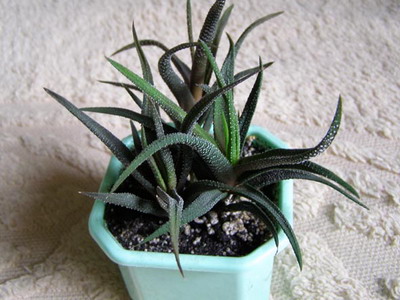
Typical representatives of the herbaceous group in the photo with descriptions:
Haworthia herbaceous (H. herbacea) , a beautiful compact plant with a diameter of a single outlet not exceeding 5 cm, small triangular leaves bordered with cilia. Depending on growing conditions (illumination and amount of moisture), the color varies from almost black to light green.

Haworthia cobweb (H. arachnoidea) is similar to the previous species, it is distinguished by longer cilia, intertwined into a kind of cobweb.
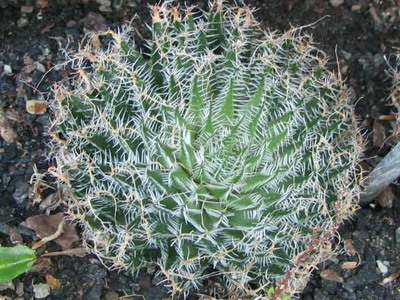
Reticulate haworthia (H. reticulata) , with light yellowish-green leaves, decorated with a darker mesh.
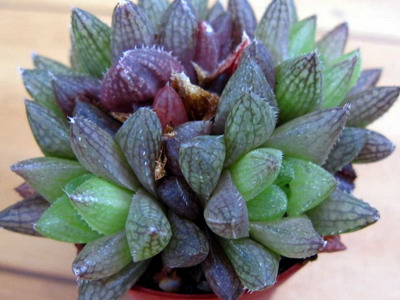
Haworthia mosaic (H. tessellata) , with an even more interesting pattern, a light mesh on a dark translucent sheet.
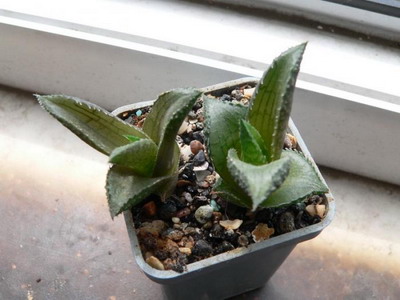
A characteristic feature of window species is partial immersion in the ground and the presence of translucent windows at the ends of thick leaves protruding to the surface. This structure allows to reduce the evaporation surface and minimize the influence of solar radiation. From this group are popular:
Haworthia boat-shaped (H. cymbiformis) with soft, fleshy, shiny bluish-green leaves of an ovoid shape. The windows are located on pointed thickened ends, beveled like the bow of a boat. The plant grows well, in diameter a single rosette reaches 10 cm, with side shoots – up to 20 cm. There are many varieties.
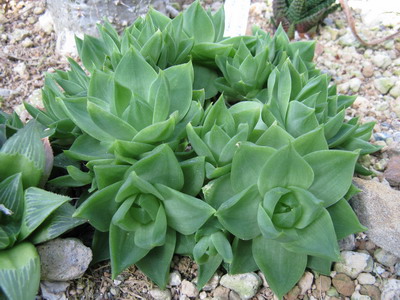
Haworthia retuza or obtuse (H. retusa) has hard fleshy trihedral leaves 3 to 5 cm long, their upper part is flattened-convex, bent back and covered with light lines with transparent windows. Color varies from green to reddish or brownish green. There are low-chlorophyll and variegated forms. Known variety “Giant”, characterized by large leaves, “multilineata” with tops lined with thin veins.
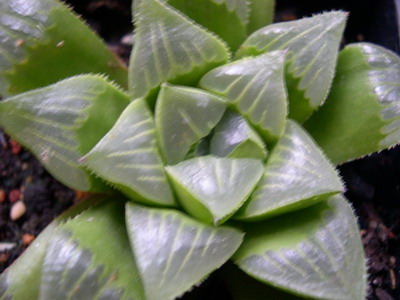
Haworthia maugana (H. maughanii) , a very original look with vertically arranged cylindrical leaves, collected in a bunch and ending at the same height, at the level where the soil would end if the plant grew immersed in it, as in nature.

Haworthia chopped off (H. truncate) , another plant of an unusual species, up to 8 cm in diameter, with two rows of dark green leaves up to 4 cm long, thick, as if chopped off at the ends, with an oval translucent window located in the same plane.
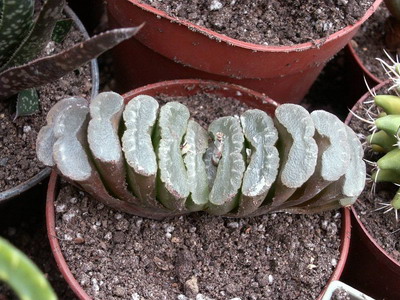
The last two species serve as the basis for the selection of new hybrids with different colors.







